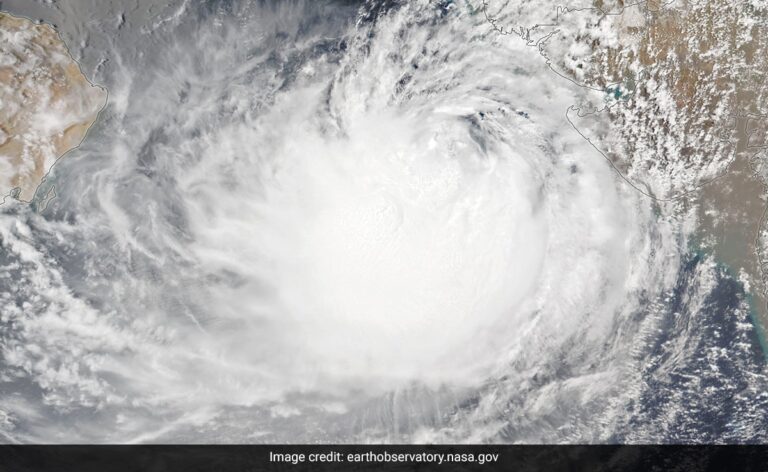
[ad_1]

Biparjoy is a tropical cyclone that will make landfall with high-speed wind.
Cyclone Biparjoy is hours away from making landfall. The “very severe cyclonic storm” is likely to carry a maximum wind speed of 115-125 kmph when it hits land in Gujarat’s Kutch district. Red and Orange alerts have been issued in several districts of the state with nearly one lakh people shifted to shelters. Cyclone Biparjoy is one of the most powerful tropical storms to hit India in recent years, according to India Meteorological Department (IMD). Weather officers across the world have established metrics to call a storm a cyclone.
How is a cyclone formed?
Powerful weather system like cyclones are formed by atmospheric disturbances around a low-pressure area and are accompanied by violent storms and bad weather. When the warm, moist air above the ocean upward, the remaining low-pressure area is filled with the high-pressure air from the surroundings causing a destructive air circulation.
According to National Disaster Management Authority (NDMA), the word cyclone is derived from the Greek word Cyclos meaning the coils of a snake. It was coined by Henry Peddington because the tropical storms in the Bay of Bengal and the Arabian Sea appear like coiled serpents of the sea.
Types of cyclones
Cyclones are broadly classified as extra tropical and tropical. The storm system that develops in the regions between the Tropics of Capricorn and Cancer are called tropical cancer.
Extra tropical cancer, meanwhile, occur in temperate zones and high latitude regions, though they are known to originate in the Polar regions, according to NDMA.
Important thing to note here is the air circulates inward in an anti-clockwise direction in the Northern hemisphere and clockwise in the Southern hemisphere.
Worldwide terminologies
Cyclones are called by various names across the world. In the China Sea and Pacific Ocean they are called typhoons, hurricanes in the West Indian islands in the Caribbean Sea and Atlantic Ocean, tornados in the Guinea lands of West Africa and southern USA, willy-willies in north-western Australia and tropical cyclones in the Indian Ocean.
Cyclones and the Indian subcontinent
According to NDMA, the region is one of the worst affected by cyclones. The Indian subcontinent has a long coastline of 8,041 kilometres, which is exposed to nearly 10 per cent of the world’s tropical cyclones.
The disaster relief agency further said that the majority of these cyclones have their initial genesis over the Bay of Bengal and strike the East coast of India. On an average, five to six tropical cyclones form every year, of which two or three could be severe.
[ad_2]
Source link